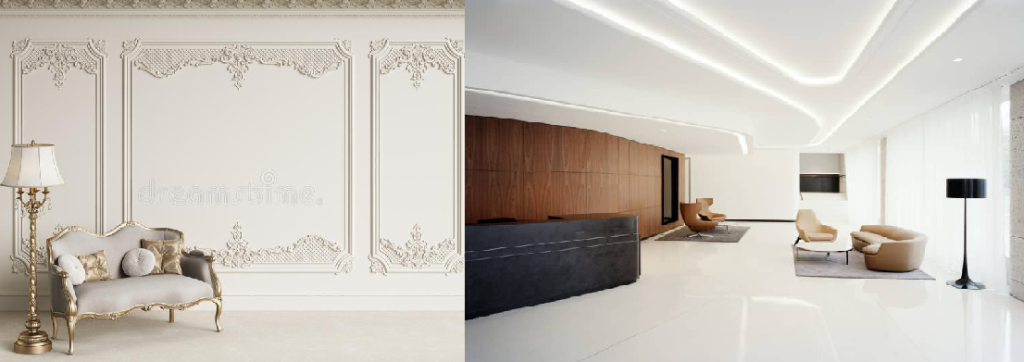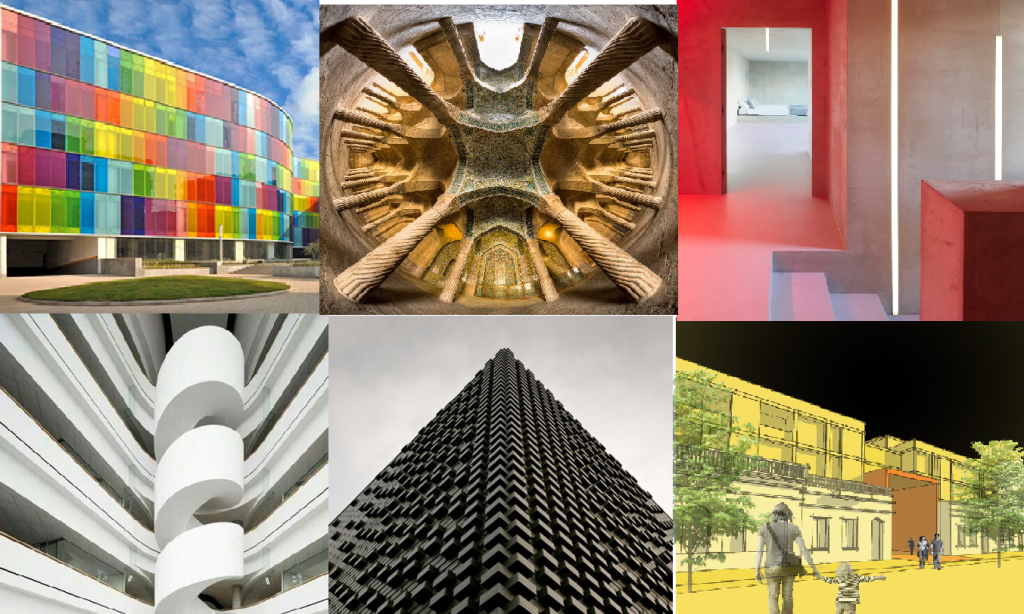In architecture we can highlight lots of qualities of design and function that a building can have
By the enviroment, we can see the contrast; where the project dominates the landscape, camouflage; where the building is extremelly integrated, organicism; where the elements transmit sensivity or context; where the meaning of the project is related with its surrounding.

Also we can differentiate different types of spaces like:
1.Classic: close and compact character as we have seen through history
2.Open: linked to the function, only exists if its used
3.Modern: lets the space flow with horizontal and vertical connections
4.Contemporary: the entire building is unique and continous

Now, we will see different important features of the composure of architecture
The rythm is a sequence of shapes in the space
The axis are linear elements that mark a dimension and distribute the space
The symmetry is the regular arrangement of the points of a body in relaation with its axis
The hierarchy is the relation of supremmacy between the elements of a building because of their size, form or situation
The module is a unitary element used to repeat it all over the building with the same or different sizes
The grid is the composition based on a net of axes serving as a guide
The movement is the effect that produce the irregularity of forms and the variants of order
The unity is the relation of the parts of a building being all needed between them
Centrality is the organization of the space around a center
The balance is the complementary relationship between the elements of a composition
The limits are the elements of edge that mark a change on spaces
The lights can show shapes and colours through their shadows
The contrast is the contraposition of elements by its volume, color, shape, texture…
The color is the chromatic manifestation of the elements
The texture is the surface finishing of the elements involved in the final perception
The proportion is the harmonic relation of dimensions according to certain mathemathic or geometric rules
The scale is the relation between the size of the building and the size of the human being

Finally, we have the classification of architecture by the functionalism
1.Mechanical: form is a direct and mechanical consequence of the functions to which is linked. Beauty becomes automatically fron the mechanic efficience
2.Organic: biological sense adapted to the living functions and human activities on the social enviroment
3.Moralist: forms must be what they appear, structural systems should be used with integrity and expressed by themselves with honestly
